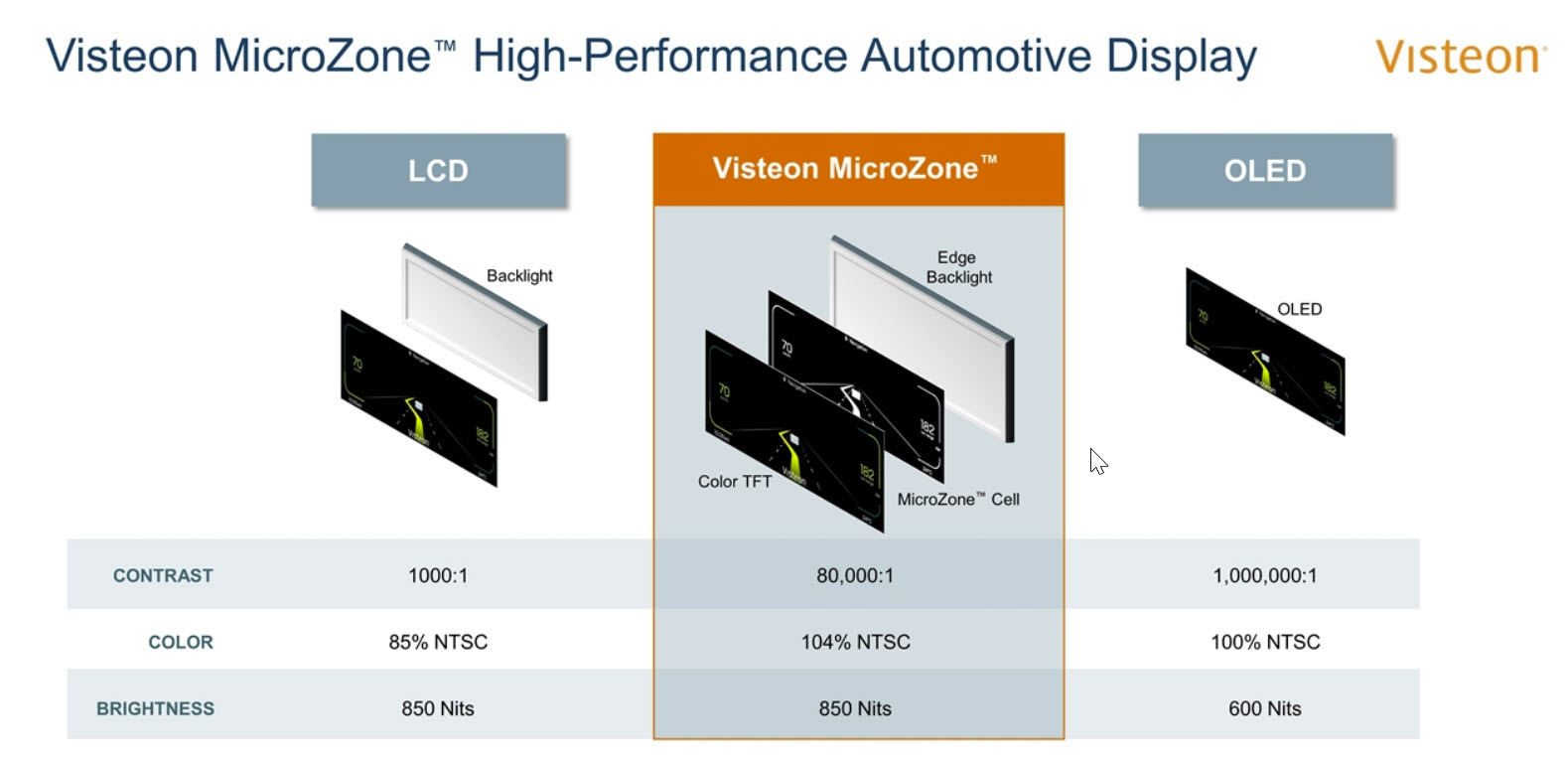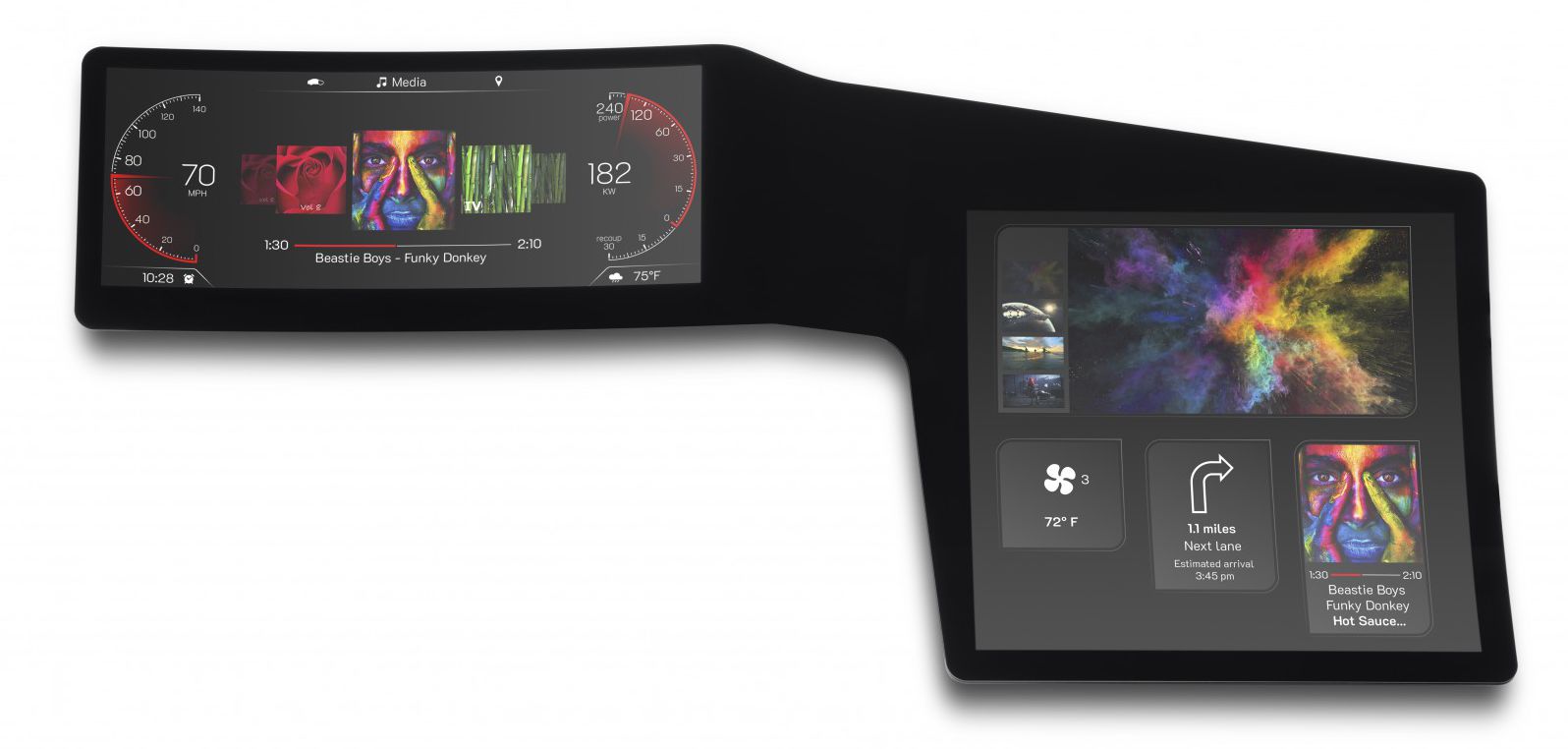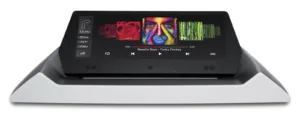Visteon Corporation (Van Buren Township, MI), a major automotive cockpit electronics technology company, used the occasion of the recent CES exhibition to debut some of the company’s latest display technologies.

In looking towards the future, the company sees connected cars and autonomous vehicles with cockpits that include fully reconfigurable instrument clusters. More specific to readers of Display Daily, Visteon sees the need for cockpit displays that have optical performance that is competitive with the mobile devices with which consumers are already familiar. In addition, it is anticipated that vehicles will have high contrast cameras and will, therefore, need high contrast displays to properly present these images.
To address these goals, a fundamental decision made by the company was to base their displays on mature LCD technology. Part of their thinking was that this will enable the instrument clusters to pass rigorous automotive qualification requirements without susceptibility to burn-in. In other words, the company developed a patent-pending technology designed to bridge the gap between conventional LCDs and OLEDs.
One result of the company’s development efforts on show at CES was the so-called microZone display. There is not much in the way of public information available on the technology used in this display. None-the-less, one published illustration shows the display module with two LCDs in optical series. (I added the diagram below which clearly shows that this is a dual panel concept – Editor)
 Visteon’s Microzone uses a dual LCD concept. Click for higher resolution.
Visteon’s Microzone uses a dual LCD concept. Click for higher resolution.
Using this configuration and method, it is possible to produce an image with an extremely high dynamic range. In somewhat vague terms, the microZone specifications are reported as follows.
- Color gamut up to 110% NTSC and compliant with the DCI-P3 color standard for HD. (DCI-P3 is a common RGB color space for digital movie projection from the American film industry.)
- Contrast ratio is greater than 100,000:1. At wide viewing angles, the contrast ratio is measured above 10,000:1.
- Brightness that can range between 850 and 1300 nits.
It was pointed out that the microZone display can meet these performance targets at a power consumption of 9W which is represented as on par with traditional LCD technology.
Also of interest is the fact that the microZone integrates a driver monitoring camera into the module. The camera system is reportedly made by Xperi Corp. (San Jose, CA) and is used to monitor the driver’s face and eyes.
A video at the end of this article includes an interview made on the floor of the CES exhibition and discusses Visteon’s new display technologies. The figure below is Visteon’s microZone automotive display.
Visteon microZone automotive display.
Also on show at the CES exhibit was a display system that Visteon called a flexible rotating glass cockpit. It is based on POLED (Plastic OLED) display technology. This display system is illustrated in the figure below.
 Visteon flexible rotating glass cockpit.
Visteon flexible rotating glass cockpit.
This display can bend around the driver in a so-called sport mode or bend back to flat mode to allow the front passenger to view the display. In the figure, the bend can be visualized by imagining the left and right short edges of the display module moving either in or out of the plane of the page. More specifically, the display at the exhibition and pictured above could bend 5 degrees into the page and 15 degrees out of the page. The bend is accomplished by using Visteon’s patented display hinge mechanism.
Look closely at the module illustrated above and it is possible to see that the display on the left is curved along a vertical axis and the display on the right is curved along a horizontal axis. Company literature describes the process of curving the displays using the following descriptive terms: optical and structural bonding done by Visteon, bond then bend process, cold forming lens process and structural bonding. Curved and flexible displays are an important part of Visteon’s vision of future cockpit instrumentation.
A top level description for the new Visteon automotive display technology might be that it “offers higher graphics performance than traditional LCD displays, while providing a cost-effective alternative to OLED displays for cars and trucks.” -Arthur Berman
Visteon, Amna Kamal, 1-734-664-2372, [email protected]

